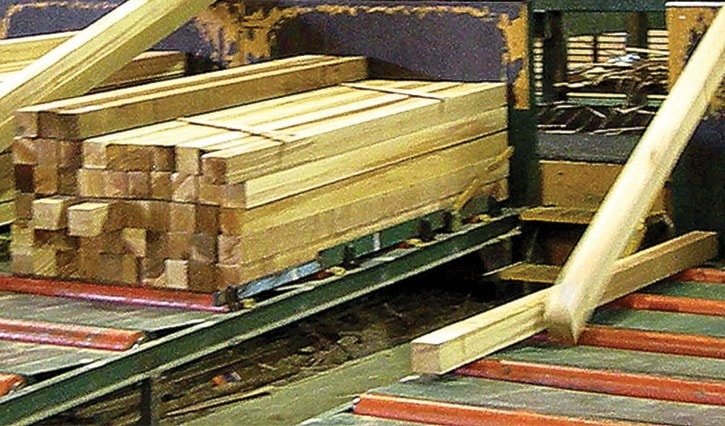The 2006 softwood lumber agreement between Canada and the U.S. expired on Oct. 12, 2015.
Under the terms of the agreement, the U.S. is precluded from launching trade action against Canada for a period of one year after the agreement expires.
So what happens if a deal is not reached before this standstill period ends?
According to Steve Zika, Chief Executive Officer of Hampton Affiliates – company that owns Babine Forest Products -, if a deal is not made by the October deadline, there is a risk that the U.S. will file for antidumping or other tariffs, similar to what was in place prior to the last softwood lumber agreement.
“Any additional taxes or tariffs will have a negative effect on individual operations in B.C.,” explained Zika. “Depending on market or economic conditions at the time, these additional costs could result in less operation hours or closures of some facilities.”
However, he says there is a possibility that additional tariffs could also bring benefits to certain Canadian producers - as these additional tariffs would reduce Canadian lumber shipments into the U.S. and consequently raise lumber prices.
“The actual negotiations are between the governments of the U.S. and Canada, so there is very little, individual companies can do to influence the outcome,” said Zika. “It is unfortunate that this trade battle never seems to go away, but I am optimistic that eventually a workable solution will come together,”
Hampton Affiliates is officially neutral on this issue since the company has operations on both sides of the border.
According to Harry Nelson, a Professor of Forest Policy and Economics at the University of British Columbia, as the standstill period gets closer to the end, it actually creates more uncertainty.
“It creates heightened uncertainty as we get closer because how the deal is structured can create winners and losers by affecting access to the market, where it can change the competitive position of some players relative to others,” he said.
“The expectation is that there will be some type of agreement, simply because we've had some kind of agreement in place for so much of the past two and a half decades,” he added.
John Babcock, a Spokesperson for Global Affairs Canada, said the softwood lumber issue is a top priority for the federal government.
Babcock said Canadian minister of international trade Chrystia Freeland has held extensive consultations with stakeholders and provinces, as well as the U.S. trade representative Michael Froman and U.S. secretary of commerce Penny Pritzker.
“We are working constructively with our U.S. partners on a mutually acceptable path forward,” said Babcock. “We remain focused on maintaining stable access to the U.S. market for the Canadian softwood lumber industry.”
However, in October 2015, B.C. premier Christy Clark said the U.S. had not been willing to discuss renewing or extending the agreement. In a statement in the legislature, Clark said the province has been working with the federal government seeking an extension or renewal of the agreement for the past two years.
She also emphasized the importance of stability in Canada-U.S. softwood lumber trade to B.C.
The province estimates that about 40 per cent of B.C.’s rural communities are dependent on forestry. In fact, B.C. is Canada’s largest producer of softwood lumber, accounting for 55 per cent of Canada’s lumber exports to the U.S. forestry.
“British Columbia’s forest industry is too important to take for granted,” said Clark. “For lumber producers, and the communities throughout the province that depend on them, we need to avoid an unnecessary trade dispute with our most significant market.”
Understand what the agreement is
The Canada-U.S. lumber dispute is a long standing issue.
Softwood lumber dispute first arose in 1982 with a complaint by the U.S. lumber industry that low Canadian stumpage rates constituted an unfair advantage.
The 2006 softwood lumber agreement required Canada to put an escalating tax on exports as softwood lumber prices drop below a predetermined threshold. It’s a form of managed trade, designed to limit potential harm to American producers.
The agreement ended five years of litigation and returned $4 billion in duties collected by the U.S. to Canadian producers. The agreement has also provided improved market certainty for lumber manufacturers in B.C. and Canada, while enabling the province to manage its forest resources and maintain access to the U.S. market.
